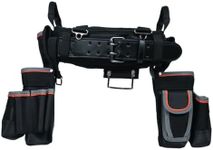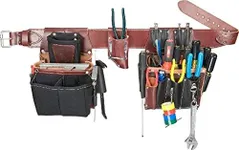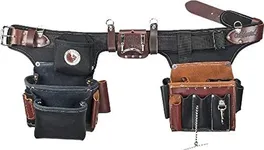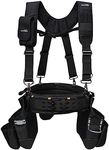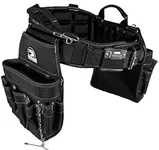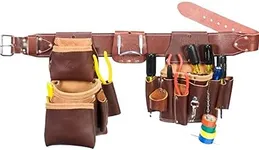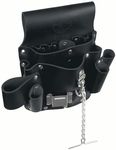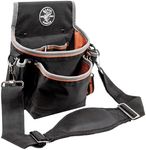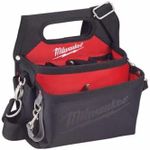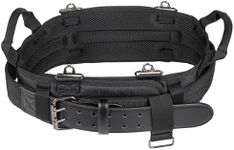Buying Guide for the Best Electrician Tool Belts
Choosing the right electrician tool belt is all about making your work easier, safer, and more organized. A good tool belt helps you keep your essential tools within reach, reduces trips up and down ladders, and can even help prevent fatigue and injury by distributing weight evenly. When picking a tool belt, think about the type of work you do most often, how many tools you need to carry, and your comfort during long hours on the job. The right tool belt should fit well, hold everything you need, and stand up to daily wear and tear.MaterialThe material of a tool belt determines its durability, weight, and comfort. Common materials include leather, nylon, and polyester. Leather is very durable and can last for years, but it is heavier and may require some break-in time. Nylon and polyester are lighter and often more affordable, but may not last as long as leather. If you work in tough environments or need a belt that will last for many years, leather might be best. For lighter work or if you prefer something less heavy, nylon or polyester could be a better fit.
Number and Type of PocketsThe number and type of pockets on a tool belt affect how many tools and accessories you can carry and how organized you can be. Some belts have many small pockets for screws and connectors, while others have larger pouches for bigger tools. If you carry a lot of small parts, look for belts with multiple small pockets. If you need to carry larger tools, make sure the pouches are big enough. Think about your daily tasks and choose a pocket layout that matches the tools you use most.
Belt Fit and AdjustabilityA tool belt should fit comfortably around your waist and be adjustable to accommodate different clothing or body sizes. Some belts come in fixed sizes, while others are adjustable with buckles or Velcro. A good fit is important to prevent the belt from slipping or causing discomfort during long workdays. If you often wear different layers or share your belt with others, an adjustable model is more versatile. Always try to adjust the belt to your waist before buying if possible.
Weight Distribution and SupportWeight distribution is about how the belt spreads the load of your tools across your hips and back. Some belts have padded straps or suspenders to help distribute weight more evenly and reduce strain. If you carry a lot of heavy tools or work long hours, look for belts with extra padding or the option to add suspenders. This can help prevent back pain and fatigue. If you only carry a few lightweight tools, a simpler belt without extra support may be sufficient.
Closure TypeThe closure type refers to how the belt fastens around your waist. Common types include buckles, Velcro, and snap closures. Buckles are very secure and durable, but may take a little longer to put on or take off. Velcro is quick and easy, but may wear out over time. Snap closures are a middle ground. Choose a closure that feels secure and is easy for you to use, especially if you need to take the belt on and off frequently.
Customization and ModularitySome tool belts allow you to add or remove pouches and accessories, making them customizable for different jobs. This is called modularity. If your work changes often or you want to carry different tools for different tasks, a modular belt lets you adapt easily. If you always use the same tools, a fixed design may be simpler and more stable. Think about whether you need flexibility or if a standard setup will work for you.
